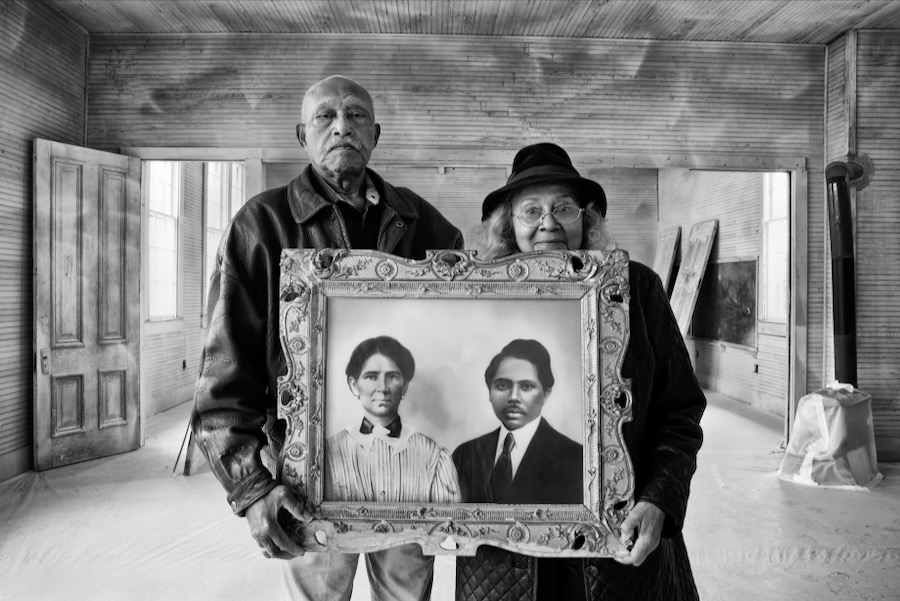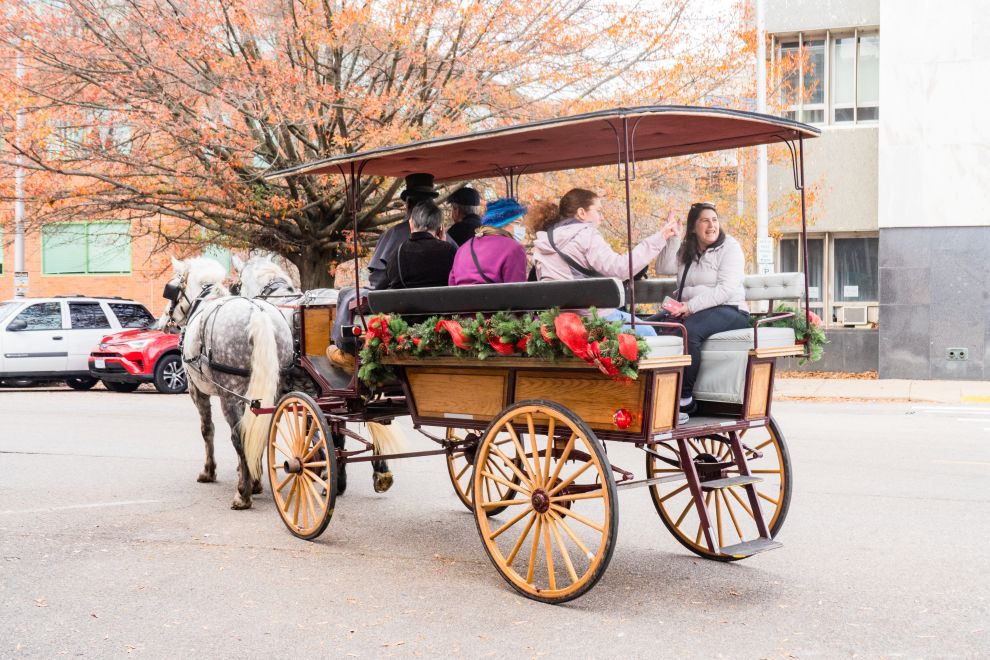The story of education is a long and complicated one across the nation. In Virginia, a well-documented piece of history is the commitment to racial segregation in the public schools.
Last year, Richmond author Kristen Green’s best-selling book, Something Must be Done About Prince Edward County, propelled the issue front and center. In Henrico County, a student-led, grassroots movement is calling for the renaming of Harry F. Byrd Middle School because the man for whom the school was named was the architect of the campaign of massive resistance to prevent public school desegregation. Few people know about a chapter that came before – in between the Civil War and the launch of the Civil Rights movement – the extraordinary efforts during the early twentieth century to bring education to Black communities.
Hidden History of Education for Black Students
Our lives are shaped by stories, those shared and omitted. I realized this more deeply when I first heard Alyce Miller, PhD, associate professor of history at John Tyler Community College (JTCC), tell the story of the Rosenwald Schools. Having grown up in the North, I had never heard of Julius Rosenwald. A successful American businessman born in 1862, Rosenwald used the wealth he acquired as a result of his investments in Sears, Roebuck and Company to support a variety of causes. The son of Jewish immigrants, Rosenwald was inspired by his rabbi, Emil Hirsch, who believed the generation that created the wealth should benefit from it.
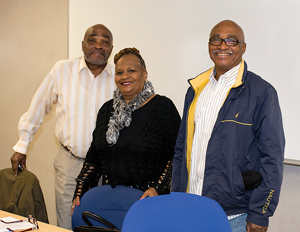
Although public school was mandated for all children in 1852 and a law was passed in 1896 requiring separate but equal education facilities for Black students, many children in the South did not have access to an education. Having suffered religious persecution, Rosenwald empathized with Black communities and joined the board at the Tuskegee School in Alabama to support efforts to create schools for African Americans in the segregated South.
Eventually, he set up the Rosenwald Fund so that interested communities could build their own schools. From 1917 to 1932, more than 5,000 Rosenwald Schools were built throughout the South in fifteen states: Alabama, Arkansas, Florida, Georgia, Kentucky, Louisiana, Maryland, Mississippi, Missouri, North Carolina, Oklahoma, South Carolina, Tennessee, Texas, and Virginia.
Learn More About Rosenwald Schools
Dr. Miller and her colleagues launched the Rosenwald initiative at JTCC in 2013 to preserve the memory and share the stories of students who attended one of the Rosenwald Schools in the Richmond area. The JTCC team worked in partnership with Preservation Virginia and neighboring counties to record alumni oral histories. The students who attended the Rosenwald Schools in the Richmond area range in age from fifty to ninety. “These stories of local educational activism and ordinary people making a difference have resonated with our [JTCC] students,” Dr. Miller said.
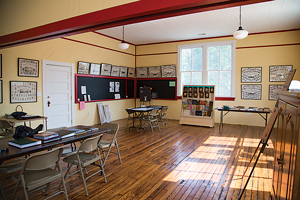
While both JTCC students and interviewees were often nervous when interviews began, Dr. Miller said it wasn’t long before a rapport developed. “Students often commented afterwards that hearing how hard the [Rosenwald School] alumni and their families had to fight for an education made them realize that they shouldn’t take the educational opportunities they have for granted.”
Since the schools are now referred to using Rosenwald’s name, those who know the backstory often don’t realize that the philanthropist only provided an average of 15 percent of the funding. Just as today’s initiative to record Rosenwald alumni stories is a community effort, so was the building of the 367 Rosenwald Schools in Virginia. Dr. Miller explained, “A commitment of any combination of public and private funds equal to or greater than the amount provided by the Rosenwald Fund was required to build a Rosenwald school. These contributions could be any combination of cash and in-kind, but the school and property had to be deeded to the school board.”
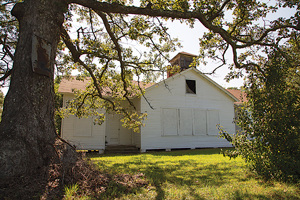
Dr. Miller added that when looking at the history of Rosenwald Schools, the strong belief within African American communities in the transformative power of education and the importance of grassroots activism to bring education to rural Black communities are apparent. “These themes have a long history of importance within the African American community, particularly during Reconstruction, when freedmen actively pursued educational opportunities, viewing education as the key to true freedom.” Ultimately, says Dr. Miller, while Rosenwald’s role helped legitimize Black schools, their existence wouldn’t have been possible without the tremendous efforts of the families living in the communities.
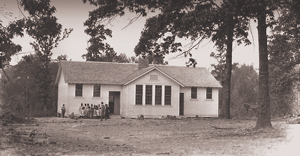
About this time last year, I heard some of these stories from Rosenwald School alumni firsthand at a reunion in Charles City. Dr. Miller, Sammie Cotman, the JTCC College Board chair, and the current owners of the yet-to-be-restored Parrish Hill School, Brian and Pat Basjert, gathered nine alumni to share what it was like to attend Parrish Hill School. I took my kids along, ages nine and twelve, to meet up with the JTCC History Club and hear the extraordinary tales of a community’s efforts to give their children an education. Whether it was starting the wood stoves, fetching water, or mowing lawns, the ways in which people assisted Rosenwald Schools were as varied as the communities they served.
During the conversation, one of the alumni told the story of having to wait in line to be served after white patrons at a Woolworth’s in Richmond. My older daughter turned to me and whispered, “We just learned about that in social studies.”
When I saw the impact of this oral history reflected in her shocked eyes, I knew I needed to be a part of this important preservation project. A few months ago, Dr. Miller and the Chesterfield County Historical Society of Virginia’s African-American Committee arranged to have Rosenwald alumni visit my English classes at JTCC. James, Charles, and Rose Mason attended the Union Grove Rosenwald School in Chesterfield County during the 1950s.
Connecting with Today’s Students
My JTCC class of twenty-two students, ranging in age from eighteen to forty and representing a variety of races and ethnicities, listened as the siblings described what it was like to attend.
James explained, “My parents paid the same taxes but we didn’t have what the other schools had.” Historians, like Dr. Miller, refer to this as the “double tax,” since Black communities needed to secure additional funds to provide their students with the same supplies white communities were allocated as a matter of course.

James also shared how the textbooks used at the Rosenwald Schools, hand-me-downs from neighboring white schools, received ratings of good, fair, or poor. He said, “If you got a book that was in good condition, you thought you had something.”
When my students asked if Black history was a part of the curriculum, the Masons described how limited the information was, mentioning a brief reference to George Washington Carver or Frederick Douglas, but that was it.
Rose said, “It was like we didn’t do anything in this world.”
Eventually, my students’ questions led to a conversation about integration. At their father’s insistence, the Mason siblings were part of the first integrated class at Matoaca High School in 1963. The teachers at Carver High School, where the Mason siblings previously attended, were dedicated and did “the best with what they had,” said Charles, but Matoaca offered better resources. Plus, it was only three miles from the family home.
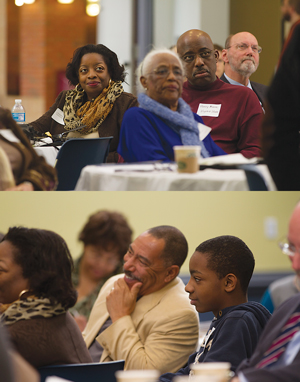
Integration was difficult, and even after all these years, raw emotions surfaced as the Mason siblings spoke about white students calling them names and picking fights. Some white teachers unfairly singled them out. Rose told stories of times she was punished without cause. Yet, she explained, “My mom would say, ‘This is what their parents teach them. They don’t know any better.’”
While I’d read accounts like these before, hearing their experiences for myself, accompanied by their mother’s forgiving words, is something I will never forget.
Before the classroom interviews ended, one of my students asked if the Masons were glad they went to Matoaca High School. Charles explained, “We got a chance to learn more and broaden our horizons. Of course, if it weren’t for integration, we wouldn’t be where we are today.”
Rosenwald History and Its Preservation
Some communities have preserved their Rosenwald Schools, like Second Union in Goochland. Other schools, like Parrish Hill in Charles City, are searching for funding for restoration. The Union Grove School the Masons attended is no longer standing.
Yet, Dr. Miller explains, “Even in places like Chesterfield County, where no Rosenwald Schools still exist, the spirit of these buildings have made them centers for learning and community. They’ve increased educational opportunities for yet another generation of Virginians.”
And projects like Dr. Miller’s will increase awareness. I know my appreciation for the hardships African American communities had to endure in order to end segregation has grown immensely since hearing these Rosenwald alumni stories.
Ultimately, these oral histories will reside in two places. The academic interviews, done in partnership with Brian Daugherity, assistant professor of history at VCU, and Cris Silvent, assistant professor of art at JTCC, will appear in a permanent exhibit, “The Goochland County Rosenwald Schools Oral History Project, 2013-2015,” on VCU’s website through the James Branch Cabell Library Special Collections and Archives. The student interviews the Masons participated in will also live online at a link from JTCC’s website.
“Our involvement helps JTCC’s students become more contributing members of our communities,” said Dr. Miller. This month, the college will host the Third Annual Conference on Rosenwald Schools in Virginia. Concurrent sessions will include presentations from Rosenwald alumni and community groups across the commonwealth as well as representatives from JTCC, the Department of Historic Resources, and Preservation Virginia.
While celebrating successes is certainly an important component of history, its real lessons lie in the recognition of mistakes. Julius Rosenwald’s philanthropic efforts nearly a century ago to improve segregated schools in the South are certainly commendable, but equally inspiring are these oral histories from members of Black communities who were wholly dedicated to lifting up their children and families through education. Their stories not only play a valuable role in the telling of history, but also offer future generations a chance to emulate their courage when bringing to life our country’s ideal of liberty and justice for all.
School building photos: Cris Silvent


